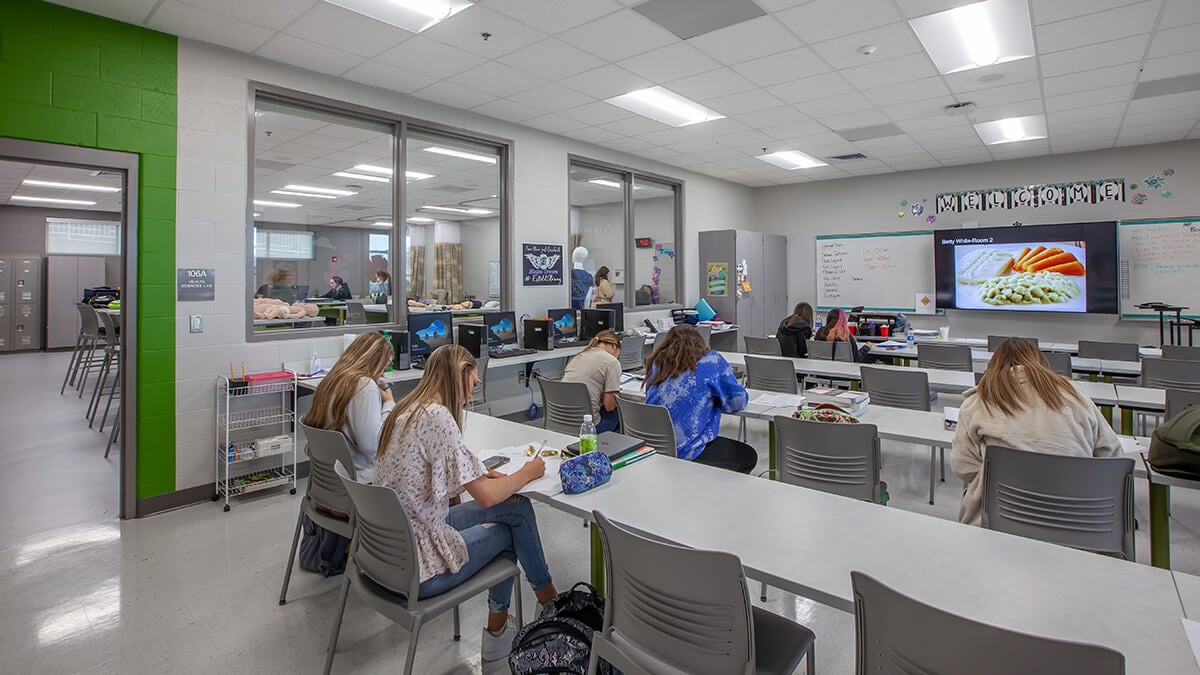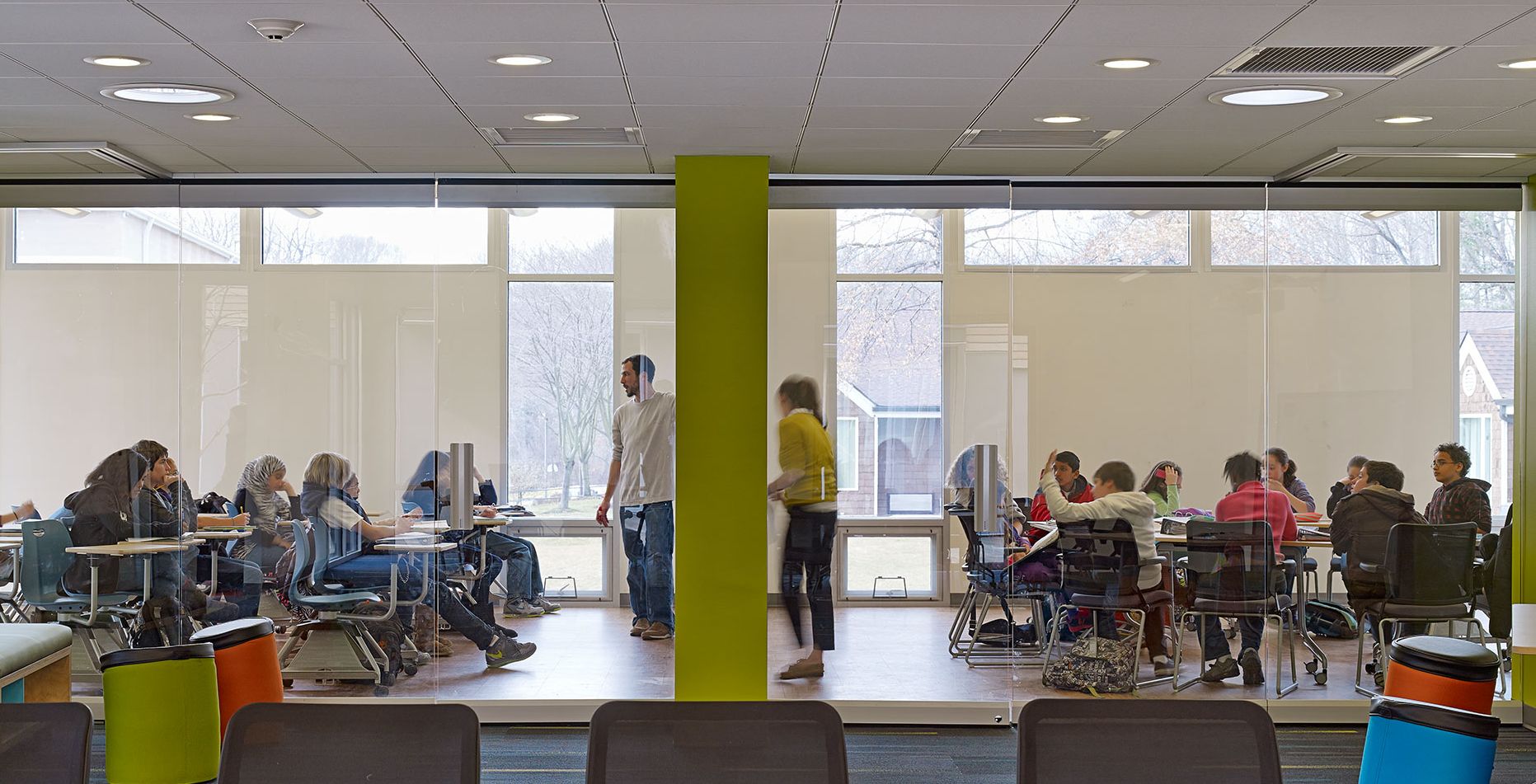The Future of K-12 Education is Project-Based Learning

Math and experiential learning teacher, Beth Rushing, responds to questions about the benefits of project-based learning
Less than one-third of students are auditory learners. So for most of us, the traditional lecture model of teaching is suboptimal.
In response, many teachers are experimenting with new ways to engage students. North Carolina math and experiential learning teacher Beth Rushing is among them. She's taught older elementary school and middle school students for more than 20 years.
Rushing originally got involved with experiential learning by participating in a training session led by Jennifer Stanchfield. Stanchfield teaches schools, businesses, and organizations how to integrate differentiated instruction, brain-based teaching techniques, experiential education, social-emotional learning, and community building into their fields.
Rushing employs these techniques in her approach to project-based learning, wherein students learn by doing. We recently spoke with Rushing about project-based learning and what it's done for her students.
This conversation has been lightly edited for clarity.
Emily McGinnis (Q): What does project-based learning look like in your classroom?
Beth Rushing (A): Project-based learning is a task or project that groups of students are engaged with that relates to our academic objectives. It can be presented in different ways: a problem they must work together to solve, a question they have to answer as a group, or something they create that relates to our learning objectives.
Q: Can you share some examples of project-based learning?
A: A homeless shelter in our community once asked if there was anyone at our school who could help spruce up some staff lockers that had gotten pretty bad over the years. These are lockers where staff and volunteers place their personal belongings when they are at the shelter. I said, "Sure, someone can help!"
I took the shelter’s inquiry back to my group of 6th grade math students and said, "What do you think?" It didn’t take long before they put together a project idea. They would use their math objectives -- surface area and measurement -- to figure out how much paint they would need to cover the lockers with two coats of paint. They worked in groups and decided the lockers should be personalized for the individuals. They had the idea to email the staff to gain more personal information. I took this time to teach the students how to write an effective email.
The students led the way -- and learned much more than math as part of their effort. They learned to solve problems, work together, and collaborate. And they also learned that helping others feels good.
Another example comes from when I was teaching an experiential learning program to a middle school class. We were learning about how to have face-to-face conversations through practice and experience. I asked the students to practice holding longer, engaging conversations with people they didn't normally talk to at school.
Then, we took a field trip to the homeless shelter to put that learning into practice. The level of conversation between the students and the clients of the shelter was amazing. When we debriefed afterward, the students were able to give so many wonderful examples of the topics they discussed.
Project-based learning need not be entirely focused on academics. Some projects, like this one at the homeless shelter, offer life lessons that our students will carry with them for years.
I've also used project-based learning to discuss bullying with my students. I asked them, "How can we get the message of anti-bullying out and across our middle school?" They ran with the prompt and ended up planning "The Death of Bullying." It was a funeral for bullying that included a program, poem, music, student speakers, a coffin, and an obituary.
I could have had just another talk with them about bullying. But they will remember this lesson because they had a project, planned it, and executed it. Connecting learning to an experience will almost always transfer to lifelong learning.
Q: How do you assess project-based learning?
A: Sometimes I do so by asking students to write a summary covering the entire process of problem-solving and thinking. Other times I do "exit tickets" in the form of a few practice problems to gauge a student's individual level of learning.
Q: What is the benefit of project-based learning for students?
A: Project-based learning gives students purpose or meaning to go along with learning. If they see how they will use the information or how it applies to everyday life, they seem to grasp the concept even more. It gives them the opportunity to work together and solve problems, and it's more engaging. Project-based learning challenges their thinking, gives them ownership over their learning, and expands their minds.
Take the locker project I mentioned earlier. Afterward, one student told me, "It was kind of hard, but I really liked it. I really had to use my brain." Would I have gotten the same reaction from that student if I had done a worksheet about surface area and had pictures of lockers? I'd say no.
Q: What is the benefit of project-based learning for teachers?
A: Project-based learning helps us motivate our students. It's also rewarding to see the high level of student engagement with our lessons. Project-based learning allows me to act as a facilitator -- I get to be part of more conversations and see the kids thinking and discussing. The approach allows teachers to integrate additional subjects, life skills, and personal growth into their classrooms.
Project-based learning also challenges teachers in different ways than traditional methods of teaching. I've been able to collaborate more with my colleagues by employing a project-based approach to my work. Plus, it's just more fun for both teachers and students.
Q: What are the barriers or challenges of having project-based learning as the classroom instructional model?
A: It can definitely be a challenge and even risky when there is a lack of training. It can be easy to get away from academic goals or objectives. You have to make a conscious decision to stay on track with those goals and objectives.
Project-based learning can also yield a more chaotic, less controlled classroom. Teachers really have to think about the outcome or assessment aspect of their projects to make them beneficial.
I don’t think every lesson can be taught using a project-based learning model. I plan two or three big projects to work toward the bigger objectives in math each year. If others present themselves along the way organically, even better. It's too much to do every lesson like that because it requires so much planning. That's why it is so important to have resources and patience.
Q: Are there any barriers for students?
A: I wouldn't say there are "barriers," but you have to think about your quiet students. You have to be strategic in how you structure project-based learning so that all students get to share in the work. You will have your natural leaders that emerge, but everyone has a place.
Some students like to have clear instruction and process, so you just have to keep coaching those students to be creative and to work with the group to problem-solve.
Also, student assessment needs to be "fair" in their eyes, so make sure you have different ways to assess their learning. Fair and equal are two different things.
Q: Do you think the benefits of using project-based learning outweigh any drawbacks?
A: Absolutely. Depending on the age of the students, if you give them some parameters and then let them go, you will see some amazing engagement and learning take place. Students will be motivated because they'll feel like their learning is purposeful and meaningful, that they have some ownership in the design of their learning.
The approach also teaches those "hidden" objectives: life-lesson skills like good character and the ability to work in a mixed group with different ideas.
Q: What advice would you give a teacher interested in trying project-based learning?
A: Remember, you don't have to be "all in" all at once. Start with one project and try to work with colleagues, if possible. Pick a big objective and present an idea or problem to the students. Put them in groups to see how they would solve it, and then the approach can grow from there.
Organic learning is always cool to watch. Have a "plan" in mind with the assessment piece, but know that as you walk around and talk to groups, those plans can and should morph. It’s not always pretty and can be scary at first, but doing it and reflecting afterward on the mistakes is better than not trying at all. Students are way more forgiving if they see that you are trying to spice up their learning.
Go visit a colleague. Watch another teacher to see how they do project-based learning. It can look different across subjects and grade levels, but teachers are great at "borrowing" ideas from other educators!
Broadening Education with Project-Based Learning
From instilling meaning into schoolwork to making teaching more rewarding, project-based learning expands education for students and teachers alike. This approach can help everyone involved have the best possible learning experience.
To learn more about project-based learning, check out the conversation I had with middle-school math teacher Nicole Hoiten, or read the op-ed piece I penned for the Dallas Morning News.
Stay tuned for a third installment of our interview series with educators practicing project-based learning -- coming soon!
Subscribe
Stay up to date with the latest trends and more.













